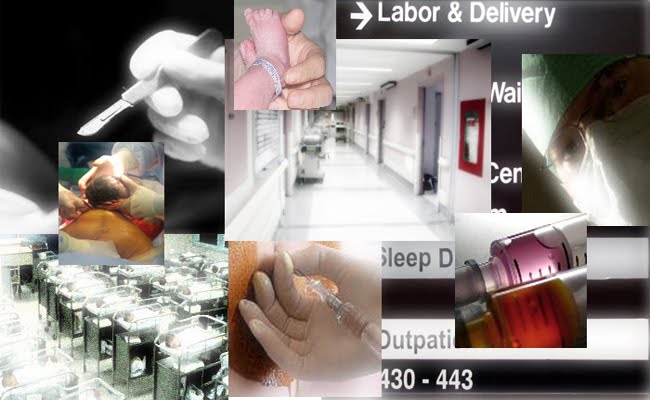ICAN Mother Provides Testimony on Capitol Hill Discriminatory Insurance Practices Investigated by Senate HELP Committee
REDONDO BEACH, CA, October 15, 2009 – Gretchen Humphries, Advocacy Director for the International Cesarean Awareness Network accompanied Peggy Robertson of Centennial, Colorado to a Senate hearing in the Health, Education, Labor and Pensions (HELP) Committee. Ms. Robertson testified about her experiences with discriminatory insurance practices based on her history of cesarean.
Ms. Robertson was featured in a New York Times article in July 2008 after she was declined insurance due to her previous cesarean. She was informed by the insurance company that her application would be accepted if she agreed to be sterilized.
As of 2007, 31.8% of childbearing women in the United States had a cesarean delivery and the rate continues to increase each year. These increases are due, in part, to the growing number of women who are denied the opportunity to have a vaginal birth after cesarean (VBAC) through similarly discriminatory VBAC bans. “The prospect of rendering a third of women uninsurable is frightening and unconscionable,” said Desirre Andrews, President of ICAN. “Many of these women are being pressured or bullied into first-time and repeat cesareans, and to doubly inflict them by leaving them without health insurance is offensive.” Clearly this type of practice potentially affects a very large number of women now and in the future as the cesarean rate continues to climb and the vaginal birth after cesarean rate continues to decline.
The practice of denying a woman health insurance because of a prior cesarean also indicts the medical community. Many of the cesareans performed today are unnecessary or the by-product of an over-interventive labor management process that is rooted in defensive medicine practices. “It is absolutely wrong to deny coverage to women either because of past cesareans or the risk of future cesareans, but it is also wrong to prop up a system where physicians can overuse surgery that both harms the health of women and babies, and forces insurance companies to take on excessive costs.” said Gretchen Humphries, ICAN’s Advocacy Director.
Cesarean section is associated with double to triple the cost of a normal vaginal birth. Cesarean also imposes the risks of medical complications in the short-term and long-term, which often carry high costs. “Insurance companies, in their actuarial pragmatism, are doing the math and recognizing that moms with a history of cesarean are high-cost beneficiaries and working to weed them out of the pool of people they cover. It’s discriminatory and lawmakers need to address this issue and determine a way to protect mothers, both from the practices of the insurance industry and the non-evidence based care from obstetricians,” said Humphries.
Maternity care is the number one most expensive line-item in the U.S. healthcare bill. From 1996 to 2006, the national cesarean rate rose by 50 percent, setting a new record each year from 2000 onward. The proportion of medically induced labors rose by 135 percent from 1990 to 2005, with strong suggestions that these official induction rates identify only roughly 50 percent of actual inductions. The burden on the health care system is staggering for maternity care as it is today. In 2005, the combined hospital charges for birthing women and newborns totaled $79,277,733,843 and exceeded charges for any other condition. Private insurers paid for 51 percent and Medicaid paid for 42 percent of these stays. “Pregnancy and delivery” was the most expensive condition, followed by “newborn infants” for both payers. Six of the ten most common procedures billed to Medicaid and to private insurers in 2005 were maternity related. Cesarean section was the most common operating room procedure for Medicaid, private payers and all payers combined.
As policymakers focus on healthcare reform and finding ways to improve outcomes while lowering costs, ICAN calls on policymakers to address the needs of pregnant women and make low-cost, optimal-outcome birth easier to access.
Currently: ·
Few women are given the information they need to navigate the pitfalls of the defensive medicine model of care that is rampant ·
Women are routinely coerced or pressured into expensive care that does nothing to improve outcomes, especially through the increasing practice of banning vaginal birth after cesarean (VBAC) ·
Access to low-intervention midwife-attended births are hampered by reimbursement issues, or onerous collaborative agreement requirements for practicing midwives
“The unique beauty of maternity care is that we can simultaneously improve quality and reduce costs,” said Andrews. “But we need to start by treating women fairly and equitably, and intelligently reserve medical technology and interventions for when they are appropriate.”
Mission statement: ICAN is a nonprofit organization whose mission is to improve maternal-child health by preventing unnecessary cesareans through education, providing support for cesarean recovery and promoting vaginal birth after cesarean. There are more than 117 ICAN Chapters across North America, Canada , and various international locations which hold educational and support meetings for people interested in cesarean prevention and recovery.
Citation: C. Sakala & M. Corry. Evidence-Based Maternity Care: What It Is and What It Can Achieve. 2008.
If you or someone you know has been denied insurance coverage because of a previous cesarean section, please contact ICAN at Advocacy@ican-online.org





No comments:
Post a Comment